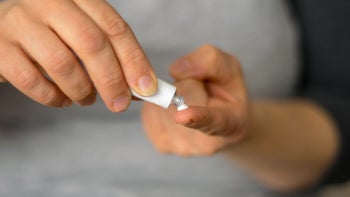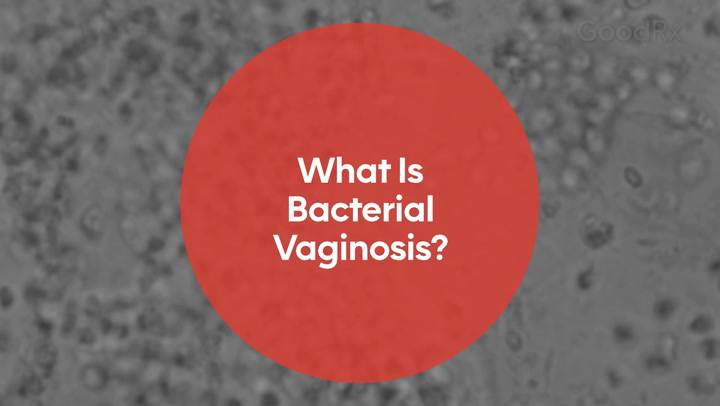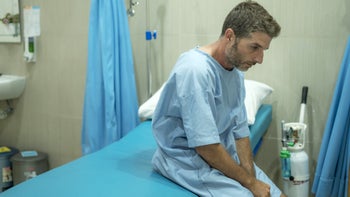
Probiotics for Bacterial Vaginosis (BV): Do They Help Treat and Prevent BV?
Key takeaways:
Probiotics contain microorganisms, like Lactobacillus, that provide beneficial bacteria to the vaginal flora.
Probiotics can be used in combination with antibiotics to treat bacterial vaginosis (BV).
Taking probiotics regularly may help prevent further episodes of BV.

Bacterial vaginosis (BV) is a very common gynecological infection. It develops when there’s an alteration of vaginal flora. In other words, there's a mismatch of good bacteria and bad bacteria in the vagina. When there’s less good bacteria, bad bacteria have the space to flourish. This results in symptoms of BV like vaginal discharge with a fishy odor and irritation and itchiness.
Antibiotics can treat BV. But up to 70% of people experience another episode of BV within 12 months. If you’re one of the many people dealing with recurrent BV, you may be wondering if there’s anything you can do to stop BV from coming back. It turns out that probiotics can not only help treat BV but also lower the risk of it coming back.
Here’s what to know about probiotics for bacterial vaginosis, and how to use them effectively to prevent future BV episodes.
How do probiotics help with bacterial vaginosis (BV)?
Probiotics help with BV by rebalancing vaginal flora in favor of the good bacteria. Many probiotics contain Lactobacillus, a type of bacteria that normally lives in the vagina. When you take the probiotics, some of the live bacteria arrive in your vagina and help re-establish normal Lactobacillus levels.
Lactobacillus binds to the vaginal wall and prevents bad bacteria from growing by secreting lactic acid. So it’s important to have the right amount of Lactobacillus in your vagina to keep bad bacteria from growing and causing BV.
Best probiotics for bacterial vaginosis (BV)
Probiotics that contain Lactobacillus species are the best options for preventing future episodes of BV. They can also help ease symptoms while you’re taking antibiotics to treat BV.
There are many types of Lactobacilli species that normally live in the vagina. Some of these are in probiotics and can be taken orally or vaginally.
Lactobacillus acidophilus
Lactobacillus acidophilus (L. acidophilus) is the most frequently studied of the Lactobacilli species. You can buy probiotic supplements that contain L. acidophilus. But you can also try eating more foods that naturally contain this probiotic. Foods that naturally have L. acidophilus include fermented foods, such as sauerkraut, tempeh and miso. It’s also added to some yogurts and cheese.
Lactobacillus rhamnosus
Lactobacillus rhamnosus can also maintain vaginal health and prevent symptoms of bacterial vaginosis. It’s available as an oral supplement and vaginal suppository. It also occurs naturally in some fermented foods and yogurt.
Lactobacillus reuteri
Lactobacillus reuteri (L. reuteri) is another strain of bacteria that’s found in probiotics. Probiotics containing L. reuteri have been shown to help relieve the presence of pathogenic (bad) bacteria in the vagina. It naturally occurs in some foods like meats and dairy products, including kefir.
Lactobacillus fermentum
Lactobacillus fermentum is a bacteria that commonly lives in human mouths, gastrointestinal tract, and vagina. Through fermentation, it can produce the antioxidant glutathione. Studies have shown that taking probiotics with this bacteria, either orally or as a vaginal suppository, can help ease the symptoms of bacterial vaginosis.
How to take probiotics for bacterial vaginosis (BV)
Probiotics containing Lactobacillus can come in pills and vaginal suppositories. You can take either form along with antibiotics to treat BV. You can also take either form of probiotic to help prevent future episodes of BV.
In studies, treatment with both antibiotics and probiotics that contain Lactobacillus lowered the risk of BV coming back.
It’s not clear how long you have to take probiotics to lower your risk of future episodes of BV. One study showed that taking probiotics daily for up to 3 months was more effective than taking them for less than 1 month. So it’s probably best to keep taking them for at least 3 months before taking a break.
Depending on a probiotic product’s intended use, the FDA might regulate it as a dietary supplement, a food ingredient, or a medication. Most probiotics are treated as dietary supplements, that means they aren’t regulated like medications. So it’s important to pick a trustworthy brand. Look for brands tested by United States Pharmacopeia (USP), National Science Foundation (NSF), or Consumer Labs.
When should you get care for bacterial vaginosis (BV)?
Some cases of BV resolve on their own without any treatment. But, if you have symptoms like itching, pain, or foul-smelling discharge, you should get care from your OB-GYN or primary care provider.
The bottom line
Bacterial vaginosis (BV) is a common vaginal infection that usually needs treatment with antibiotics. Probiotics that contain Lactobacillus can help ease symptoms of BV when taken with antibiotics. They can also prevent future episodes of BV by maintaining the balance between good and bad bacteria in the vagina.
Why trust our experts?


References
Al-Ghazzewi, F. H., et al. (2015). Biotherapeutic agents and vaginal health. Journal of Applied Microbiology.
Ansari, A., et al. (2023). Lactobacillus probiotics improve vaginal dysbiosis in asymptomatic women. Nutrients.
Bradshaw, C. S., et al. (2006). High recurrence rates of bacterial vaginosis over the course of 12 months after oral metronidazole therapy and factors associated with recurrence. The Journal of Infectious Diseases.
Bodean, O., et al. (2013). Probiotics - a helpful additional therapy for bacterial vaginosis. Journal of Medicine and Life.
Coudeyras, S., et al. (2008). Adhesion of human probiotic Lactobacillus rhamnosus to cervical and vaginal cells and interaction with vaginosis - associated pathogens. Infectious Diseases in Obstetrics and Gynecology.
Ilomuanya, M. O., et al. (2022). Formulation and optimization of metronidazole and Lactobacillus spp. Layered suppositories via a three-variable, five-level central composite design for the management of bacterial vaginosis. Pharmaceutics.
Khedkar, R., et al. (2022). Bacterial vaginosis: A comprehensive narrative on the etiology, clinical features, and management approach. Cureus.
Liu, H. F., et al. (2022). A systematic review and meta-analysis on the efficacy of probiotics for bacterial vaginosis. European Review for Medical and Pharmacological Sciences.
Mei, Z, et al. (2022). The role of probiotics in vaginal health. Frontiers in Cellular and Infection Microbiology.
National Center for Complementary and Integrative Health. (2019). Probiotics: What you need to know.
Pendharkar, S., et al. (2023). Lactobacilli and their probiotic effects in the vagina of reproductive age women. Microorganisms.
Widyastuti, Y., et al. (2021). Health-promoting properties of Lactobacilli in fermented dairy products. Frontiers in Microbiology.









